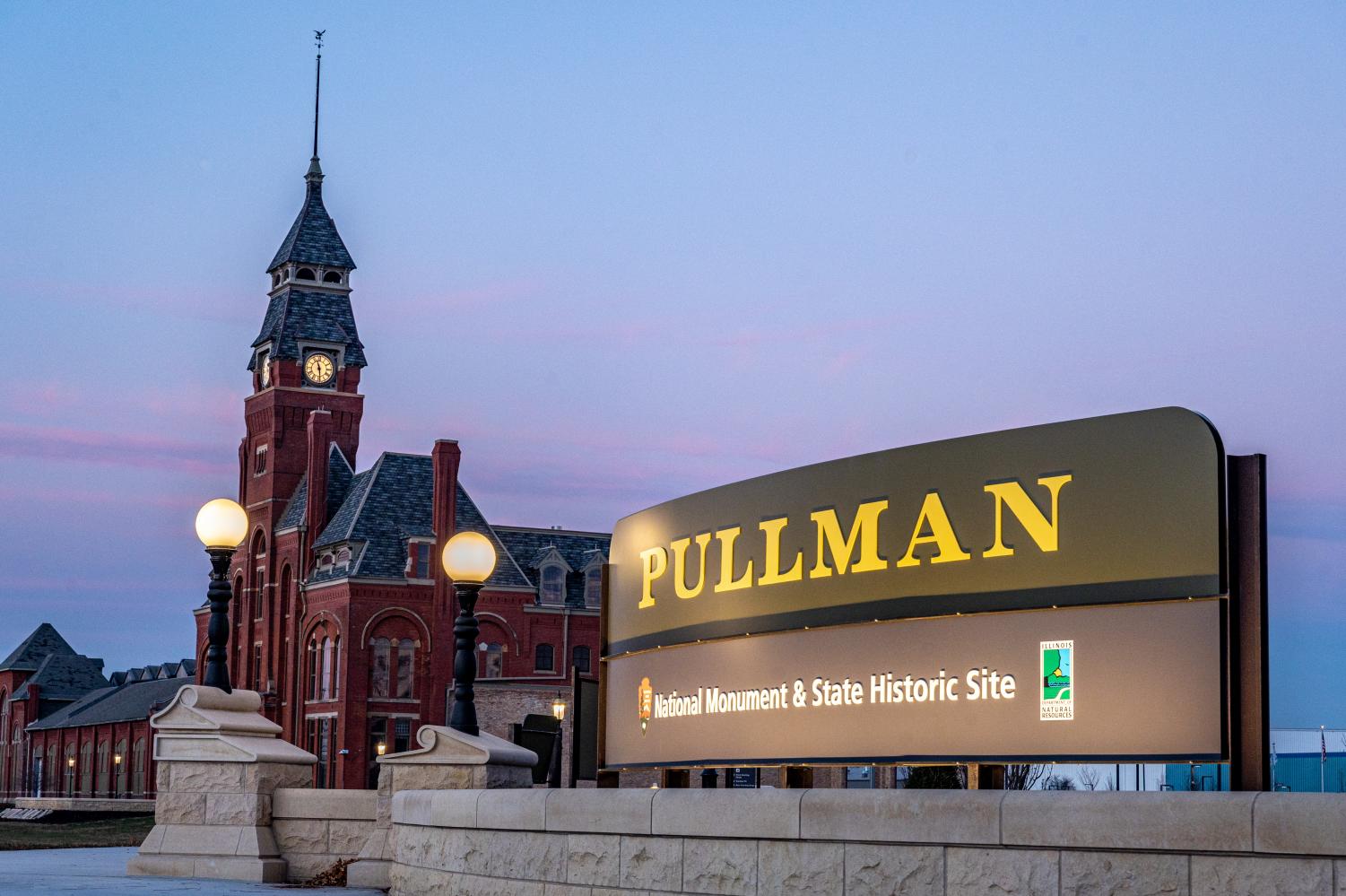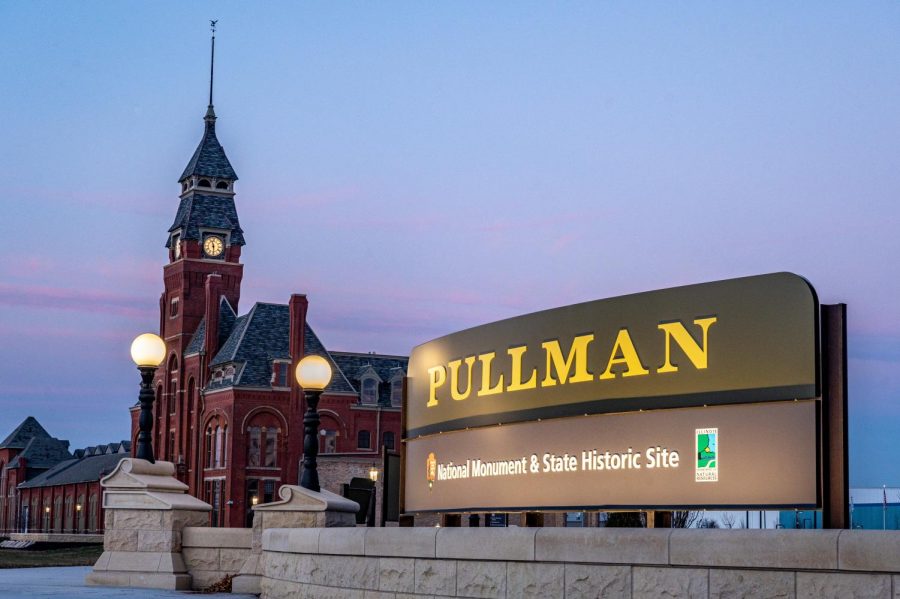Crimson brick houses tightly packed together form a perfectly neat row. The spire of a large, red clock tower dominates the sky. Walking along the sidewalk, you feel blasted into the 19th century in a world altogether apart from present-day Chicago — but this area is still part of the city. Welcome to the Pullman neighborhood.
Visit and learn about Pullman, while being surrounded by its historic buildings, to dive deep into the heart of the American labor movement.
Only a 20-minute drive south from Hyde Park, in 2015 President Barack Obama recognized the Pullman neighborhood as the Pullman National Monument, Chicago’s first and only National Park Service site.
During the Industrial Era, George Pullman, owner of the Pullman Palace Car Company, had the goal of building a model industrial town where his workers could enjoy a happy and healthy environment. The company-run town of Pullman was finished in 1881.
Start a visit at the Pullman Visitor Center, housed at the extensively renovated Administration Clock Tower Building (610 E. 111th Street). Fittingly opened over Labor Day Weekend, the center contains an engaging history timeline and exhibit run by the National Park Service.
Step into a Pullman car model to experience first-hand the luxury of the green velvet furnishments, and afterward learn about four key stories: George Pullman, the town of Pullman, the 1894 Pullman Worker Strike and the Pullman porters, which led to the growing African American middle class.
The museum deftly weaves artifacts and symbols to showcase the history of the town. Films, building models and interactive elements bring the story of the Pullman laborers to life. Match rotating dials to learn the cost of canned goods and listen to the story of the 1894 strike, which contributed to the creation of a new federal holiday, Labor Day. Each part of the exhibit poses reflective questions for viewers about workers’ rights, connecting the story of Pullman to today’s visitors.
Quinn Wermeling, a National Park Service ranger, encourages people to come to the neighborhood and learn about Pullman’s importance.
“It’s our history and these are our treasures. These are our resources,” Mr. Wermeling said. “This is for all of us to explore and enjoy and learn from.”
After the visitor’s center, walk across the street to the exhibit hall at the resident-run Historic Pullman Foundation (11141 S. Cottage Grove Ave.). Examine the many antique photos, posters and Pullman Company artifacts residents have collected. Make sure to grab a walking guide map of the neighborhood from the front desk.
Experience the beautiful architecture of Pullman for yourself by strolling along the brick row houses where employees once lived, now all private residences. Each block of houses has its own distinct style, reflecting the respective socioeconomic class of the Pullman employee residents. On your walk, check out the titanic Hotel Florence and the colorful Greenstone Church.
Many buildings in Pullman are so well preserved because of residents like Wyatt Ollestad, secretary of the Pullman Civic Organization, who is passionate about the neighborhood’s historical significance and architectural style.
“There is an equal part, I think, appreciation for the architecture as it is, the history of the town of Pullman and what it means, and also the preservation of the close-knit community feel,” Mr. Ollestad said.
Another way the community is experiencing revitalization is exemplified in the One Eleven Food Hall (756 E. 111th Street), housing restaurants such as Majani, serving vegan soul food cuisine, and Lexington Betty Smokehouse, serving barbecue.
From the newly opened visitor’s center to meticulous home restorations, the Pullman neighborhood is gaining new life by returning to its roots in the American labor movement.


John Plampin • Jan 11, 2022 at 5:41 am
For many decades, Pullman’s granddaughter,
Mrs. C. Philip Miller (Florence Lowden, daughter of governor Lowden) lived in the house at the northeast corner of 58th and Kimbark. The Pullman foundation still give scholarships to Chicago high schoolers can go to college.
Janice L. Poss • Dec 31, 2021 at 3:00 pm
I went on the first weeknit opened in Sept. It’s a terrific Chicago history lesson that I never knew about, but since my dad worked for the IC and trains were the way to travel across country, I was proud to understand this history especially for the craftsmanship aspect (the loss of wood craftsmen when steel cars replaced wooden ones), the innovations that were instituted for the trains and workers’ homes(early flush toilets), and the fight for social justice by the workers, especially Black porters and their pride in their work and positions. The site itself is huge and worth walking outside. The surrounding neighborhood is quite amazing to the the homes where the workers lived and the Green Church which is now being renovated. I grew up on the Southside (91st & Ashland), so it’s partly my ‘hood’, as it were, so visiting it had great meaning. The Natinal Park rangers were so helpful to me in explaining the history and added a very personal touch with the stories they know about the construction and plans for the future. I do hope I’ll be able to visit again when I am in Chicago. It’s a must see piece of our history now revealed!